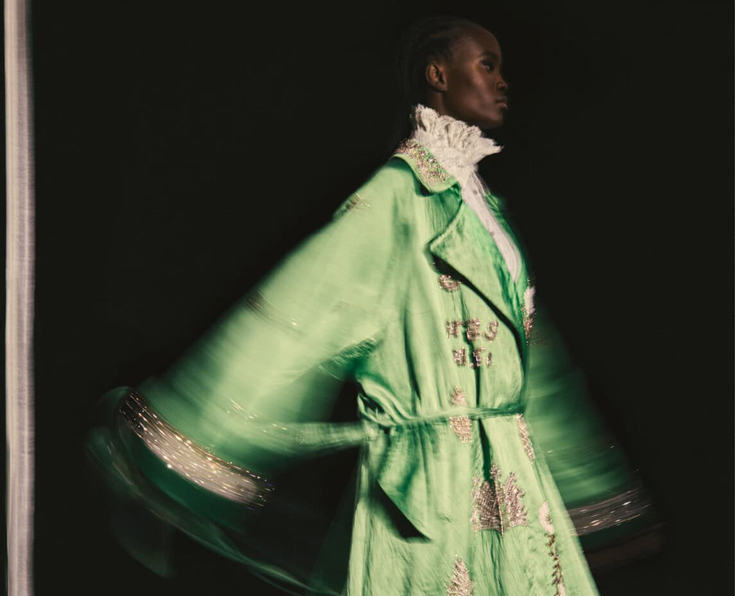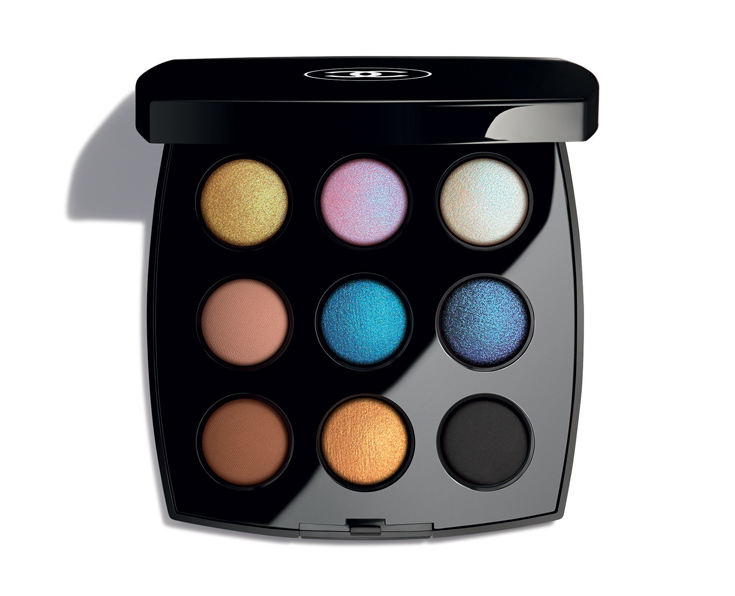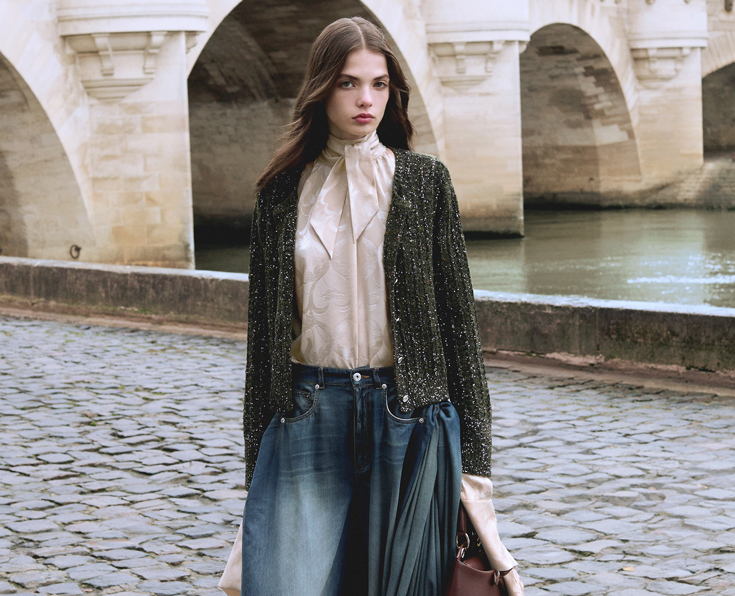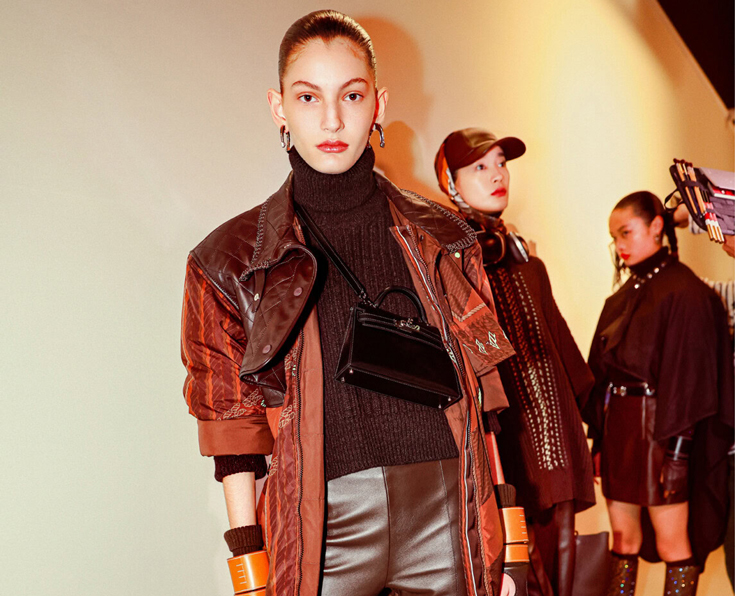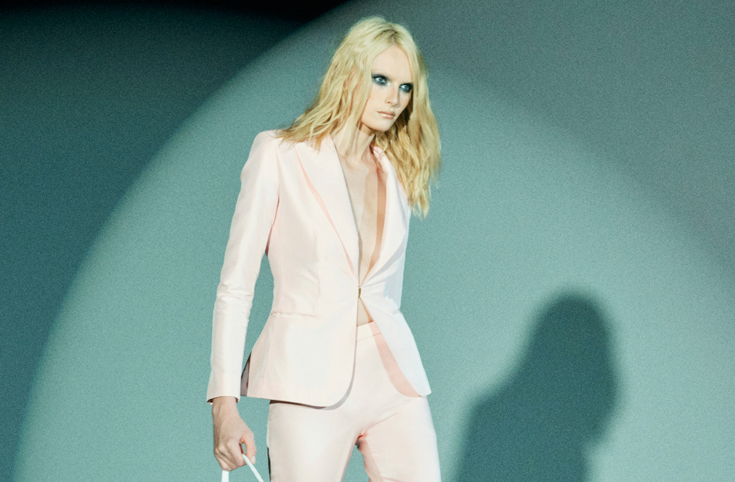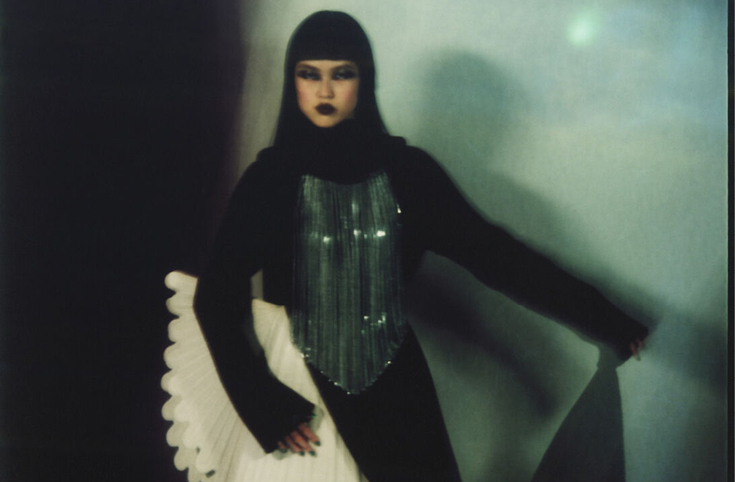JUNYA WATANABE ON CRAFTING OTHERWORLDLY WOMENSWEAR

These shapes and forms are the clothes of Junya Watanabe, a fashion creative who sits at head of his own house, one that sits under the umbrella of Comme des Garçons. The clothes (and the personas they lend) are cast at the very edge of creative endeavour: here, ideas have become experiments. Experiments have become clothes. And clothes have become a means of self-expression. Dresses with spiky bits.
Born in Fukushima in 1961, Watanabe studied at the famous Bunka Fashion College in Tokyo, joining Rei Kawakubo’s Comme des Garçons in 1984. Initially training and then establishing himself as a lead pattern-cutter at the house, he created his own-name label in 1992, which continues to sit under the purview of Comme des Garçons. A year later, Watanabe held his first womenswear show in Paris and has shown in the French capital ever since.
His methods are insular – a closed studio and a secretive process – yet his wider reading/rewriting of global culture can only mean an open mind. It’s at his studio in Tokyo where Watanabe began the initial sketches of his lauded (and complex) Paris SS24 show.
“Junya Watanabe’s exploration of three-dimensional geometry via prismatic and tubular forms for this namesake brand was literally transformational,” said the New York Times.



Yet, despite the thoughtful design and hush-hush abstract thinking, and the immeasurable hours of research, there’s a naivety to his clothes, isn’t there? We look forward to the practicalities of collecting the kids from school in a neoprene spiky dress with a Dalek vibe. How does it pack? How does it travel?
The pictures here capture, at least in essence, some of the energy (read: anarchy) we saw, or better, that we felt at the show. That show!
“There’s pressure on those watching any Junya show,” says Sophia Neophitou, 10’s global editor-in-chief. “There are hardly any show notes, if any at all. There’s certainly no explanation. This season, I think you had a massive three-word précis – ‘architecture, not clothes’. Now, the architecture bit, I get.”
It’s fun? “It’s fun, it’s also fascinating, sometimes challenging. Unique. Engaging. The clothes come at you in a way. There’s an energy.”
It’s Saturday 30th September, 9.30am at 16-18 Rue Auber, 75009, Paris.
If the costumes of the best-dressed crowds don’t signal it, the buzz will: it’s “super Saturday”. It’s Comme day and Noir day; it’s Japanese day. It’s Junya day.

Paris Fashion Week, prior, has been bursting at the metaphorical seams with new ideas and the agreed hymn from the chorus of buyers and press goes: “It’s a very good season.” But it’s always “super” on a Saturday.
Silence now, like a church. Everybody sits on pews, waiting, contemplating: you can quietly pray at this point if you wish. And then it begins.
“I remember thinking, ‘This music is shrill,’” adds Neophitou, laughing. “And I specifically remember those first three incredible looks: three models, two half-cocked wigs [by Eugene Souleiman], inky lips and shiny skin [by Isamaya Ffrench]. They were strange, like mannequins.”
You wanted to shoot it? “I wanted to understand it, then I wanted to shoot it. It looked like Junya, it spoke ‘Junya’, but something had changed. It felt different. And you must mention the casting,” she adds. “That’s always different.”
You will never see “famous girls” on a Watanabe runway. That’s not the look. You will see unknown girls and “real London girls” and Watanabe’s team make a point of travelling to the capital every season to scour the small, underground model agencies the city is known for. Their brief? “Strong, authentic. London.”
“Their [the models’] behaviour,” one show insider tells us, “should be real to them. It should be natural in how they walk or hold themselves in that London punk manner. This is very important to us. The London look is very important.”


The designer has talked in the past of his love of the capital, his days of walking and watching “the London clothes”, of trips to Portobello Market, of coffees and corner shops – always watching and listening. Thinking. Watanabe has talked, too, about a mysterious cache of the “second-hand clothes and sofa fabrics” he bought on a trip to the market more than 30 years ago.
It’s these very same fabrics that inspired his first collection. They’re a precious haul and one he returns to time and again, reappropriating, sometimes shocking, but not anymore.
In a series of email exchanges, Watanabe reveals he has now foregone his former design process, one that balanced vintage market finds with the “now”. His new “now” is music. But the music isn’t “of now”. “I used to go to flea markets in London a lot to look for ideas for clothes,” he says, “but I remember that, rather than specific clothes, it was more about the atmosphere there. That’s what stimulated my creativity.” For this, the SS24 collection, rave replaced fabric reverie: antique, declared the clothes, was out. Dance music was in. “The Chemical Brothers’ first album was in my head during the whole creation process.”
It’s the same album and the same “shrill” sound that accompanied those first “three incredible looks” at the show.
On its release in 1995, NME described the British duo’s debut, Exit Planet Dust, as “brash, raw and rule-bending”. With trip-hop on the rise and Britpop beginning to tire, the 11-track LP, a lairy 49 minutes of hip-hop meets house hybrid fuckery, brought the radical-hungry a boisterous new sound. To see parallels between the duo’s druggy debut and its “bug-eyed intensity” (NME) and Watanabe’s mind-bending show with its “wondrous new forms for which a fashion vocabulary has yet to be invented” (Women’s Wear Daily) is tempting.

The clothes (tee up The Chemical Brothers here, too) have the same sinister-meets-exceptional insiderness. “Art-wear that speaks to the fringe,” said one editor outside the show.
In the continuing scenes of family life: a Neoprene spiky dress that resembles a Dalek? Answer: yes!
There’s a happy metric to Watanabe’s clothes, less mentioned. A joy. It speaks to an avant-garde set who believe – strike that – understand the theatre of clothes. Beautiful. Brave! To many his irreverence holds a kind of quasi-religious authority. The phrase “do not be afraid” is repeated throughout the Bible.
Artistic director Michelle Elie is a collector and a wearer of his bold designs. “Wearing Junya Watanabe has always been a source of force and power for me.”
It’s strengthening? “[It’s as if] one is about to conquer the world – like a woman with a superpower,” she adds.
Elie runs with a global band of powerful women who are invited to Watanabe’s shows: city executives, gallery owners, architects, artists, filmmakers. They’re successful, cultured, a sorority of sorts; exciting women with a shared understanding that fashion is projection.



Eagle eyes will have spotted that something is slightly off on the makeshift shelves that carry his T-shirts and jumpers in London’s Dover Street Market. Here, in accordance with ancient Japanese superstitions, you will only ever see garments stacked in threes, never in fours. The number four in Japanese is pronounced shi, which is also the word for death. You will never find a room with the number four on the door in a Japanese hospital.
The wigs on the in-store mannequins are the very same Souleiman-designed ones worn in the show, three of which were carefully packed and stored and are now borrowed. They’re part of what Watanabe has called the “necessary elements” and cues to make the collection “visually convincing”.
The mannequins move, too – they have to. Exit 1, in the show, the beautiful “spiky Dalek”, must have a circumference of at least a metre and some of the jutting tubes, thanks to the complex stitching techniques hidden inside, really do stick out. There’s so much to consider when selling his clothes, let alone wearing them: the volume of these things.
The store employs a merchandising method akin to site-specific curation: the display-and-curate method practiced at MoMA and Tate Modern. Here, areas are set aside or built specifically for large-scale sculptures or complicated art, the kind of pieces that require a “view from all sides”. See Anish Kapoor. See Junya Watanabe.
A staffer refuses to give names but talks of “a relationship” between Watanabe’s clothes and loyal shoppers, women who have “found a way to express their identity, their ‘-ness’” via his creations. Just hold that thought for a moment.
“Look 1 [the spiky Dalek dress] will be available for sale at Dover Street Market this spring,” confirms Watanabe. Important. And validating. Aren’t clothes – even if they are like art – valid only if they’re worn? These sales allow Watanabe the financial headroom to create shows as changing and “art-like” as his spring show, something critics aligned with the Vorticists, the British art movement founded in 1914, and specifically the dynamic sculptural drawings of Edward Wadsworth.
Are his clothes art?
“Are my clothes art? I cannot answer this myself,” he says, “I propose what I like within the frame of the fashion industry and establish a business with it, which allows me to keep doing what I want to do.” And the shop-floor spiky Dalek? “Sold!”, say staff, “to an art collector.”
Top image: Ushka wear JUNYA WATANABE. Taken from Issue 59 of 10 Men UK – PRECISION, CRAFT, LUXURY – out now.
@junyawatanabe / doverstreetmarket.com

JUNYA WATANABE: SONG FOR THE SIREN
Photographer REMEMBER
Fashion Editor HECTOR CASTRO
Text RICHARD GRAY
Models RABINA RIGHI at Success Models, USHKA NOCHI TELE and NUBIA
Hair YUMIKO HIKAGE at CLM Agency
Make-up LLOYD SIMMONDS at Agence Carole Paris
Photographer’s assistants FLORENT MARTI and DAN RARES
Fashion assistants PAULINE COLLET and SID YAHAO SUN
Hair assistant KATRIN SACHENKO
Casting STEFANO CIARDO at Ego Casting
Production SEPTEMBRE00
Artist location manager ROMY TEXIER
Catering and PA ROWELLA SAMUELS
Clothing and accessories throughout by JUNYA WATANABE,
shoes (worn by Rabina) by HEIR VINTAGE

